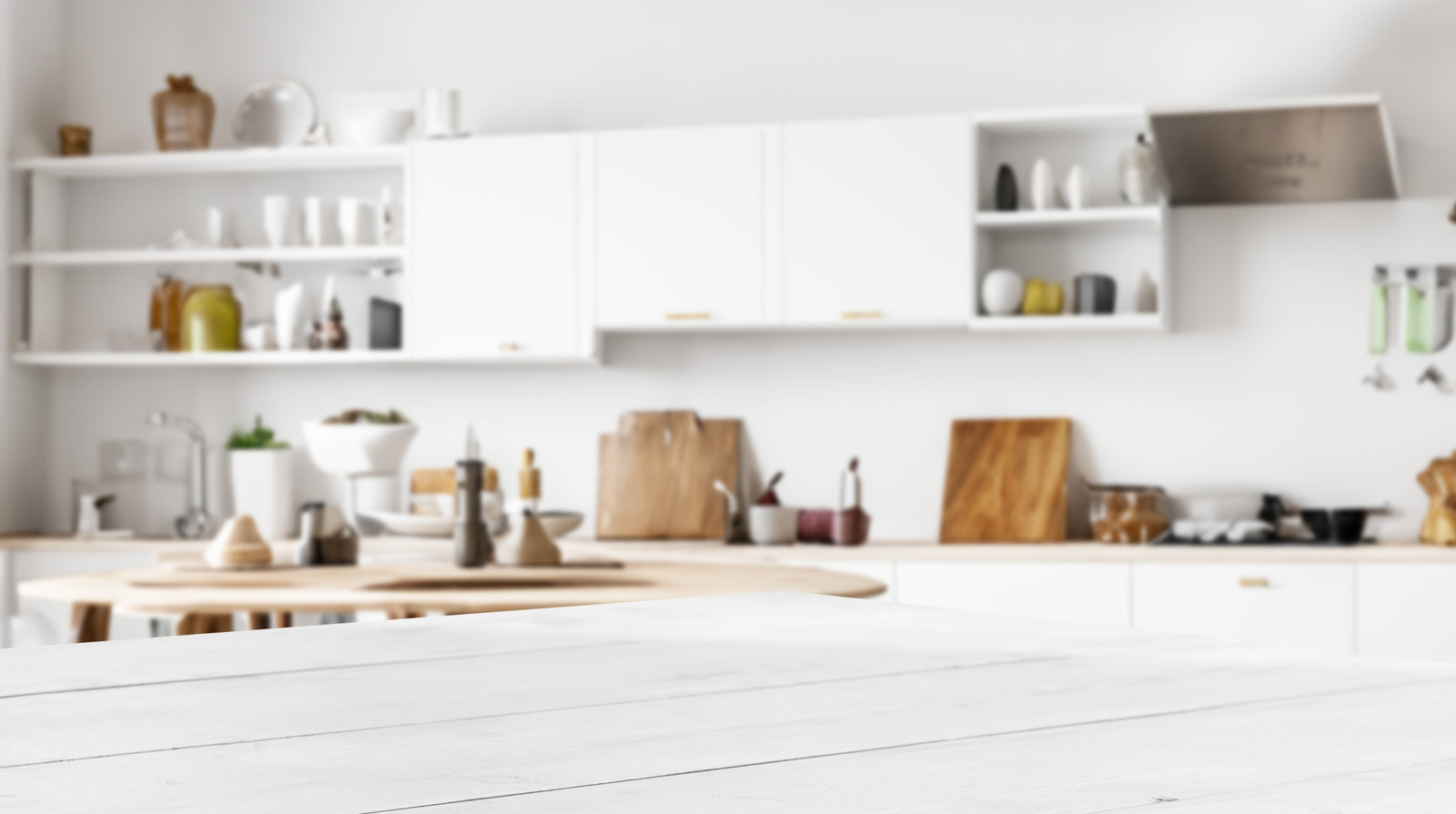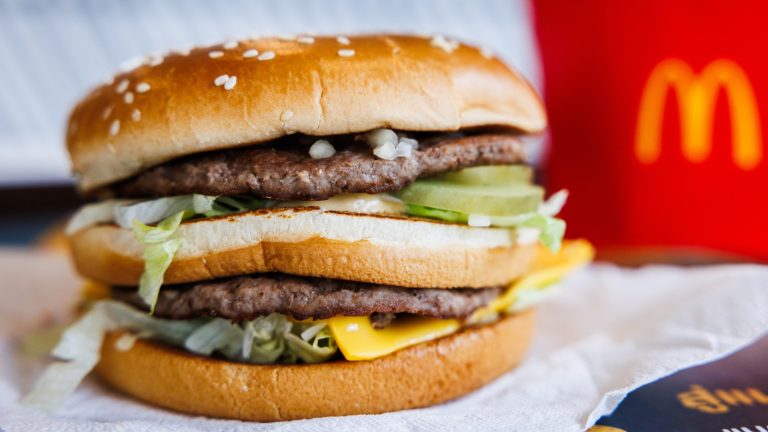We may receive a commission on purchases made from links.
One of the most important decisions when decorating a kitchen is paint color. You want the best paint, but what exactly does that mean? Is it the happiest hue? A color that enlarges the space? The perfect shade to match Nana’s vintage stand mixer?
There’s another consideration about which many people don’t know: orientation. “Your home’s orientation isn’t just a compass detail; it’s a secret language between light and space,” says Rachel Blindauer, principal interior designer at Rachel Blindauer. “In interior design, light is never neutral. It shapes mood, alters perception, and — in kitchens more than anywhere — guides every color decision.”
The amount of light and where it’s coming from have a powerful influence on how your home looks throughout the year and throughout the day, says Rick Berres, owner of Honey-Doers. “Spaces that face north are going to get less sun, less light, and will be more damp. Rooms facing south get more light,” he says.
Similarly, says Ashley Banbury, interior designer and color marketing manager for HGTV Home by Sherwin-Williams, east and west bring their own challenges. “East-facing kitchens get warm morning light and cooler afternoon shadows, whereas west-facing kitchens are dim in the morning but filled with rich, golden light in the late afternoon,” she says. You need to choose colors that complement these shifts. What are your best options? Take a look.
North: Warm neutrals
You can do so much with paint, like make your kitchen feel bigger or give the room a mid-century modern twist. But one of the best things you can do with the right coat of paint is brighten up a room that’s otherwise gloomy and blue … literally.
“Every direction filters light with its own personality. North-facing kitchens receive a steady but cool light that can make colors feel flat or icy,” Rachel Blindauer says, “so you’ll want to counterbalance with warmth. Think hues that glow even on gray mornings.” She suggests warm, creamy whites, taupe-leaning neutrals, and greiges — a mixture of gray and beige.
Looking for warm undertones really does matter, the experts agree. “One soft gray, for example, can feel cozy and calm in a sunlit south-facing kitchen and seem dull or flat in a north-facing one,” says Tony Roberts, interior designer at Direct Splashbacks. “It’s about how those colors live, breathe, and interact within the room under natural light.” He recommends muted ivory and warm beige as perfect base colors.
South: Cool shades
“If you’re lucky enough to have a south-facing home that gets a ton of bright sunlight, cooler shades work beautifully here,” says Angie Kreller, interior designer at Yabby. “In terms of color, go for soft grays, soft blues, or soft greens. For this angle, the key is to use colors that complement warm light rather than competing with it.”
Rick Berres agrees that south-facing kitchens are the best place to try out cool, saturated greens and a variety of blues. If you want a cooler pink, such as a blush, southern light is friendly to your cause as well. Refined blue grays are also a good choice, says Rachel Blindauer, as they’ll feel crisp but not cold here.
If you’re painting a tiny kitchen, make sure to stick to one color or two at the most. That way, you don’t clutter everything up, which can make you feel like you’re cooking in a kaleidoscope.
East: Airy blues
Another place blues thrive? In east-facing kitchens. Much like their southern kitchens, they get beautiful light, but it’s weighted toward the a.m. end. “East-facing kitchens are lucky enough to have the beautiful morning light, so light colors like blue, neutral shades, and greens will really help highlight this warmth,” Angie Kreller says.
However, Rachel Blindauer adds, there’s a danger here. “Morning light can be dazzling, but fades fast, so choose colors that feel uplifting early but not dim later,” she says. She recommends light, classic blues that echo morning skies or a breezy blue green that “dances with the light.” These colors are best for east-facing kitchens because they will come alive in the morning (often when we most need a pick-me-up) but stay cheerful until bedtime.
West: Whites
White is a classic for a reason. It’s beautiful, elegant, and the perfect backdrop for starring light fixtures, appliances, backsplashes, or art. However, you’ve got to do white right. Happily, westerly light is here to help you out. “West-facing spaces glow in the afternoon and evening,” Rachel Blindauer says, but they need to work in the morning as well. You want “a true white that holds clarity even as the light shifts,” she says.
“Selecting a paint color with a neutral undertone is a good choice if you want to minimize the impact of sunlight on how the color appears throughout the day,” Ashley Banbury advises. “Neutral undertones are hues that do not lean strongly warm or too cool but consistent and balanced.”
By the way, if you’re going to paint your kitchen a lighter color, make sure you choose a glossier finish so that it’s easier to clean. White colors get dingy over time, which is why you want to avoid the mistake of using it in grout, for example.
North: Calming greens
One of the best approaches for those dim north-facing kitchens is a calming green. “These shades help north-facing kitchens feel warm, welcoming, and thoughtfully styled,” Ashley Banbury says. For instance, a sage green can inject a soothing note of restfulness into your space. You can also go brighter, such as with a light pistachio green, Rick Berres says. Such hues “add a pop of color while still remaining bright enough for a north-facing room.”
Essentially, the goal is to go bright enough that your paint color can compensate for the dim, indirect light that most kitchens facing north get. “Choosing paint that works with your light is key to getting the feel just right,” Angie Kreller explains. Swatch thoroughly, because otherwise you won’t know how light and paint get along.
South: Saturated tones
“South-facing rooms are drenched in warm light all day, enhancing vibrancy,” Rachel Blindauer says. That means the best colors help to absorb this brightness rather than magnify it. For that reason, deeply saturated tones such as navy work beautifully. Ashley Banbury adds that “Delft, a cool blue, offers a refined contrast to sunny light and pairs well with natural materials.”
Remember, says Tony Roberts, that south-facing kitchens will receive lots of light throughout the day. Usually, the light is warm in tone and will enhance the colors you choose. That means you have lots of freedom to go rich and saturated, but you don’t want anything too glaring. Remember, your chosen tone should help absorb and balance that light rather than make it overpowering.
East: Cool neutrals
Morning light in east-facing kitchens can get quite bright, so it’s not the best idea to bring in tons of loud color. That can become overwhelming in the first half of the day, when you need calmness the most. As such, Rick Berres says, “I’d avoid particularly bright colors here, but I do encourage soft versions of colors.” He especially likes cool beiges, though light dusty blues, faint greens, and cool pastels can also work.
You can even go for a neutral white. “Crisp but not stark, it reflects dawn light softly,” Rachel Blindauer says, making it one of the best choices for easterly light. Make sure your chosen white has a good dose of warmth in it, though, or it can get a bit antiseptic-looking.
West: Light pastels
“West-facing rooms are often dim and shadowed in the morning but come to life with warm, dramatic light in the late afternoon and early evening,” Ashley Banbury says. “The key is to choose paint colors that feel present and interesting in the morning without becoming overwhelming when the golden-hour light hits.”
Light pastels are an excellent way to do this, she says. Pastels are at their best both when kissed by cool morning light and when warmed up by glancing afternoon rays, so they’re right at home in a west-facing kitchen. Sage green hues, lavender grays, and other soft spring tones work well here. The goal, Banbury says, is to find a color that maintains depth and balance in all lighting conditions.
North: Creamy yellows
Enter yellow, one of the best ways to brighten up a room that tends toward dimness or overly bluey tones. “First thing’s first, Rick Berres says. “You want the most light possible bouncing off the walls and reflecting into your space. Light and warm colors make up for the cooler light and the fact that you’re getting less of it. … Butter yellow is light enough to do the job: It’s warm. It’s fresh and summery and sunshiney but without being overwhelming.”
But, he cautions, you’ve got to pick the right shade. If you go too dark and rich, your kitchen will look marigold à la the early aughts. On the other end, too cool or light, and that blue light will wash your paint to a greenish hue. To reflect even more light and cheerful energy, Ashley Banbury says, consider color-drenching. Using a soft pastel yellow across the walls, ceiling, and trim will create a truly vibrant effect.
South: Pastel shades
Bright light streaming in from the south can invigorate all kinds of colors, but pastels are among the best choices. “Cool colors like sage green, dusty blue, and lavender are especially beautiful in these rooms,” Tony Roberts says. “The cool tones provide a balance to the warm sunlight, and the space still feels crisp and bright. These hues also make the kitchen feel more spacious and keep the space calm at all hours.”
Rachel Blindauer also enjoys sophisticated yellows for these spaces as well as northern ones. Make sure the hue you choose is soft and soothing, yet has “enough depth to anchor the space.” Because of all the light in south-facing rooms, you need a color that both plays well with it and doesn’t get overwhelmed.
East: Bright greens
“East-facing kitchens are lucky enough to have the beautiful morning light, so light colors like blue, neutral shades, and greens will really help highlight this warmth,” Angie Kreller says. Ashley Banbury agrees, offering sage green for a calm and airy feel. “East-facing rooms benefit from these warm-meets-cool pairings that adapt effortlessly to shifting light,” she says.
Other choices include mint or aqua, or, if you want a warmer undertone, pale olive. Another best practice is to choose your paint carefully. Rachel Blindauer recommends satin or eggshell finishes. The slight shimmer helps catch the final rays of the afternoon, which is important since the sun is on the opposite side of the house by that point. Make sure when you swatch paint that you observe the colors at this time of day.
West: Navy blues
One of the best colors for a west-facing room is navy. Rachel Blindauer loves “a moody, inky navy that transforms in golden hour.” It’s a time of high drama, she adds, when sunset brings out deep blues with “cinematic flair.” She advises you to think of light as the lens and color as the story — and your kitchen tells both. “Treat the paint as part of the choreography,” she says.
Again, finish will play into that choreography. If you’re going for a color that looks dramatic at dinnertime, then make sure that a) you paint your swatches where they will catch that afternoon light in full, and b) you observe the swatches thoroughly at that time as well as across the full day, Blindauer says.
North: Warm bolds
Warm bolds can work very well in northern rooms, where natural coolness means they tolerate distinctly warm tones well. Rachel Blindauer loves “a bold, terracotta-tinged hue that adds depth without overwhelming.” Other ideas include browns, reds, rusts, clays, and others in the warm, earth-toned but bold color spectrum.
If you’re going for a brave color, though, take care that the rest of the room is a little calmer, otherwise you risk the room feeling too busy. Remember that there are plenty of ways to update your kitchen cabinets without paint, for instance, so leave the boldness to the walls and use your other surfaces to offset it. Perhaps your cupboards are an understated wood, or your appliances are light in color to tie it all together.
South: Bold yellows
“South-facing rooms have the advantage and the privilege of receiving more light and brighter light. That means you can get away with more in these spaces,” Rick Berres says. This gives you a wider range of colors to play with. You can go deeper with shades as well because there’s less of a need to “trick” the eye by balancing color and light, as is best in north- and east-facing rooms.
Buttery yellow tones are great here, Ashley Banbury says. “The consistent lighting in these rooms allows for playfulness and layering without concern for harsh shadows or shifting tones,” she explains. Tony Roberts also likes golden yellows, adding in even deeper tones for cabinets or statement walls, which thrive in sunny south-facing environments.
East: Soft beiges
“East-facing kitchens are filled with crisp, bright light in the early morning, but that natural light diminishes as the day progresses,” Tony Roberts says. “Because of this, it’s ideal to use paint colors that capture and amplify the morning brightness, while still looking good under cooler or more muted afternoon lighting.”
Soft beiges do that well. They start out cool, “like a visual exhale,” Rachel Blindauer says. But they don’t go blue or washed out in the eastern evening light, maintaining a vibrancy from their warm undertones. Make sure to swatch multiple beiges or greiges with a variety of undertones so you can see what works best as the sun moves across the sky. Never underestimate how much the light can change throughout the day!
West: Reds and pinks
Paint is a many-splendored thing. Did you know you can even paint kitchen appliances? From using color on kitchen cabinets to tile floors, you can update your room with a simple coat of primer and a pop of color or a neutral sheen. When you’re dealing with west-facing rooms, though, you’ve got to be careful with the hues you choose.
“You want to bring back some warmth in a west-facing home, so think about warm colors,” Rick Berres says. “If you’re brave enough, try your hand at red or pink.” Such colors do a great job complementing the warm afternoon glow without making it look weird, sickly, or washed out, Angie Kreller says. Rachel Blindauer also suggests “a muted blush that becomes luminous in the evening.”
North: Golds, ambers, and rusts
Among the best colors for northern kitchens are golds, ambers, and rusts, colors that counteract the blue and naturally prevent that dim effect by imbuing the space with warmth and coziness. While pastels and neutrals always do well with northern light, “If you want a little more drama,” Tony Roberts suggests using “a bold mustard or deep amber to bring light into the room and add personality without dominating it.”
These colors do more than amplify available light, he says. They also work well with natural materials, such as wood or stone, that make up many cabinet and splashback surfaces. You’re going to find these in almost any kitchen, so be sure they play nicely together for the greatest overall visual harmony.
South: Warm whites
“South-facing rooms tend to receive an abundance of natural light all day, which gives homeowners more freedom to experiment with a wider range of paint colors,” Ashley Banbury says. “White and bright hues thrive in this environment.” The best approach is to choose a warm one that will reflect lots of light without looking sterile, she says. The goal, Rachel Blindauer adds, is to glow without creating glare.
It’s important to note that finish impacts color, Tony Roberts says. “Matte finishes eat light and darken a color, and gloss finishes reflect light and brighten a shade,” he says. Be sure you test a color thoroughly before painting it everywhere, especially next to other surfaces such as cabinets and appliances to make sure they play well together.
East: Vibrant oranges
“East-facing rooms enjoy soft, warm sunlight in the morning that transitions into cooler, flatter light by the afternoon,” Ashley Banbury explains. “To balance this shift, it’s helpful to choose colors that feel vibrant early on and remain cozy or grounded as the light fades.” Among the best colors to achieve this are warm burnt oranges, which glow in the morning and maintain their richness come evening. Pair them with creamy, modern neutrals, she says, to ensure the palette remains balanced all day.
Again, finish matters, Angie Kreller says. “Satin or eggshell finishes are best because they’re easy to wipe down but still have a beautiful sheen,” she says. It especially behooves you to pay attention to this when you’re working with eastern light, which is dim in the evening.
West: Light grays
“West-facing kitchens receive low, warm sunlight later in the day, often resulting in rich, golden light during the late afternoon and evening,” Tony Roberts says. “Mornings, however, tend to be cooler and darker, so your paint color should bridge both these extremes gracefully.” Light gray is one of the best colors for that.
If you want, you can bring subtle color to your gray tones. Roberts likes a soft blush pink, while Rachel Blindauer enjoys modern-looking light grays with lavender undertones. These become radiant in the evening, Roberts says, “injecting a sense of depth and class to the scene.”
Make sure before you slather a whole room in color that you’ve given it the right treatment. If needed, coat the room in something like Zinsser White Water-Based Mold-Killing Primer to cover up existing problems and lay a base. It doesn’t hurt to stock up on a Pro Grade Paint Roller Kit and a CCS Canvas Drop Cloth for Painting if you’re doing the job yourself.





